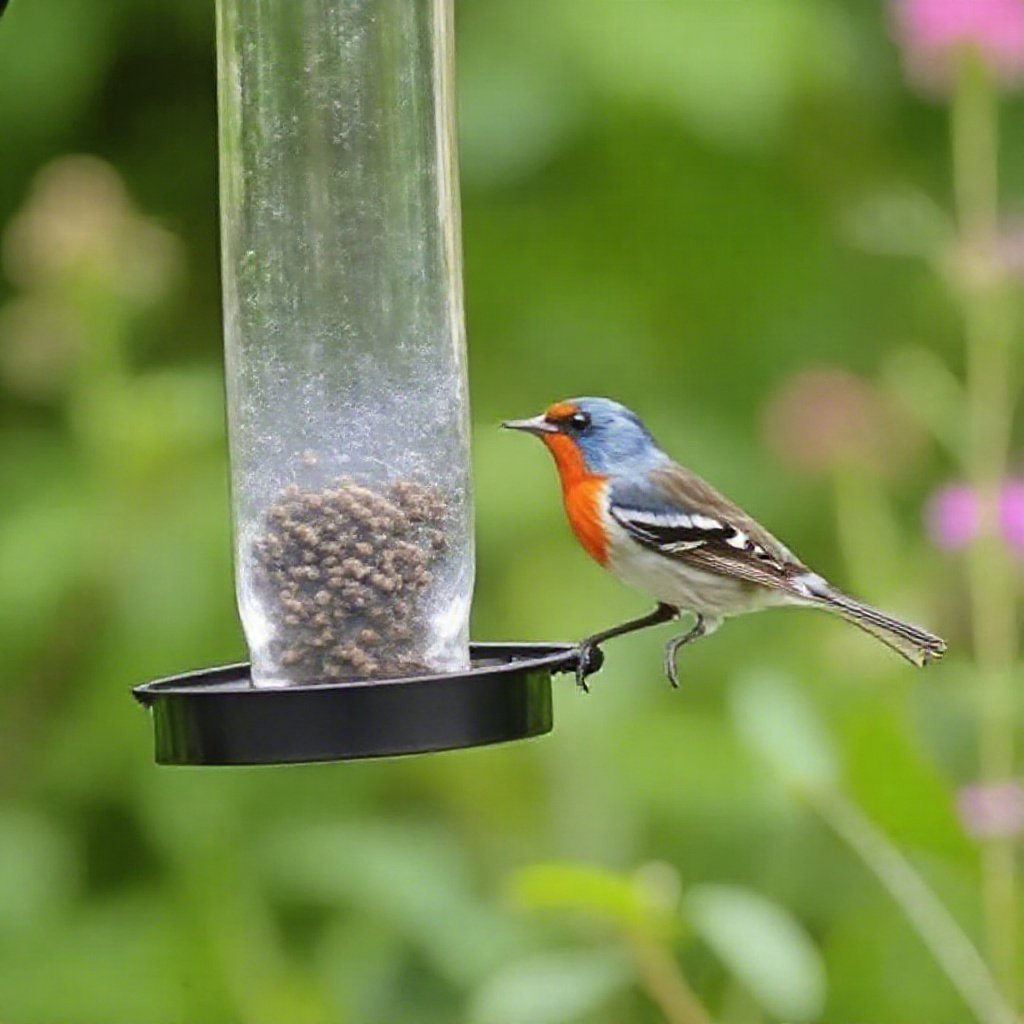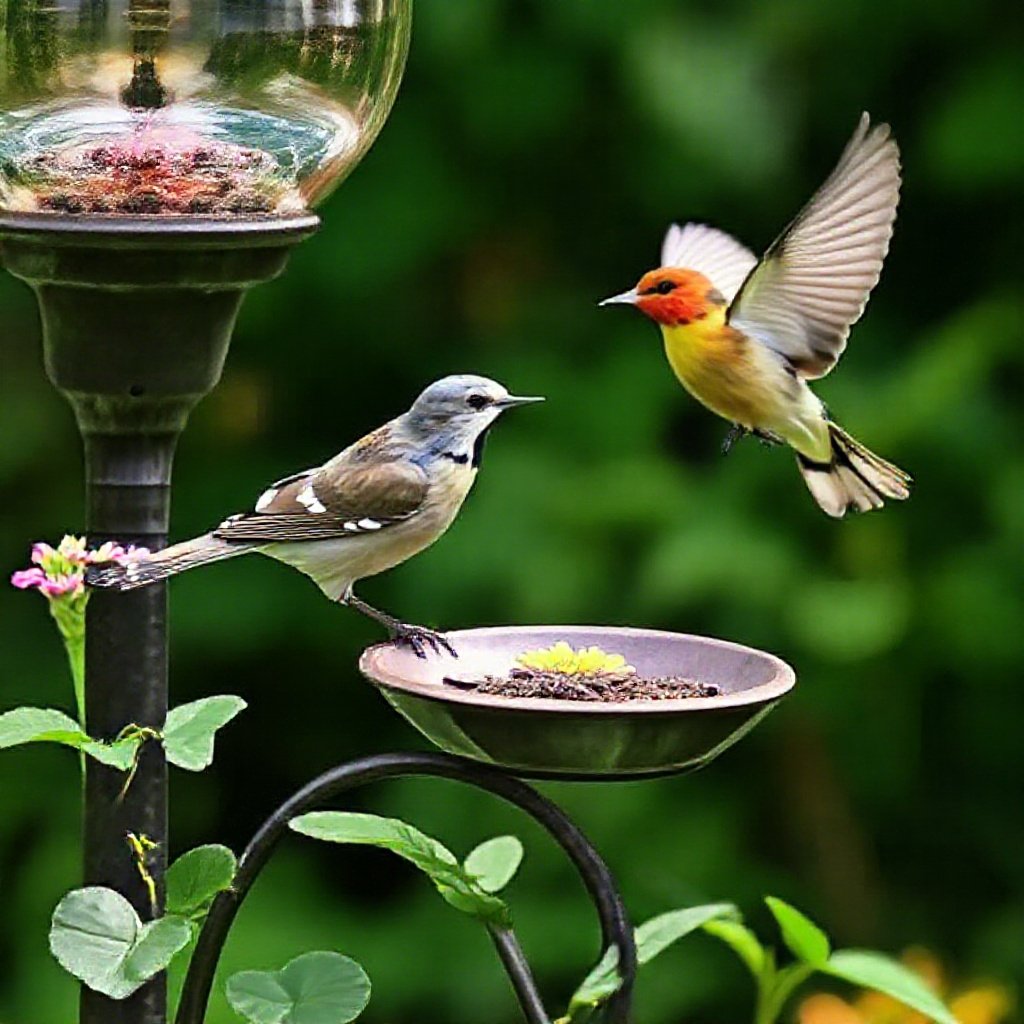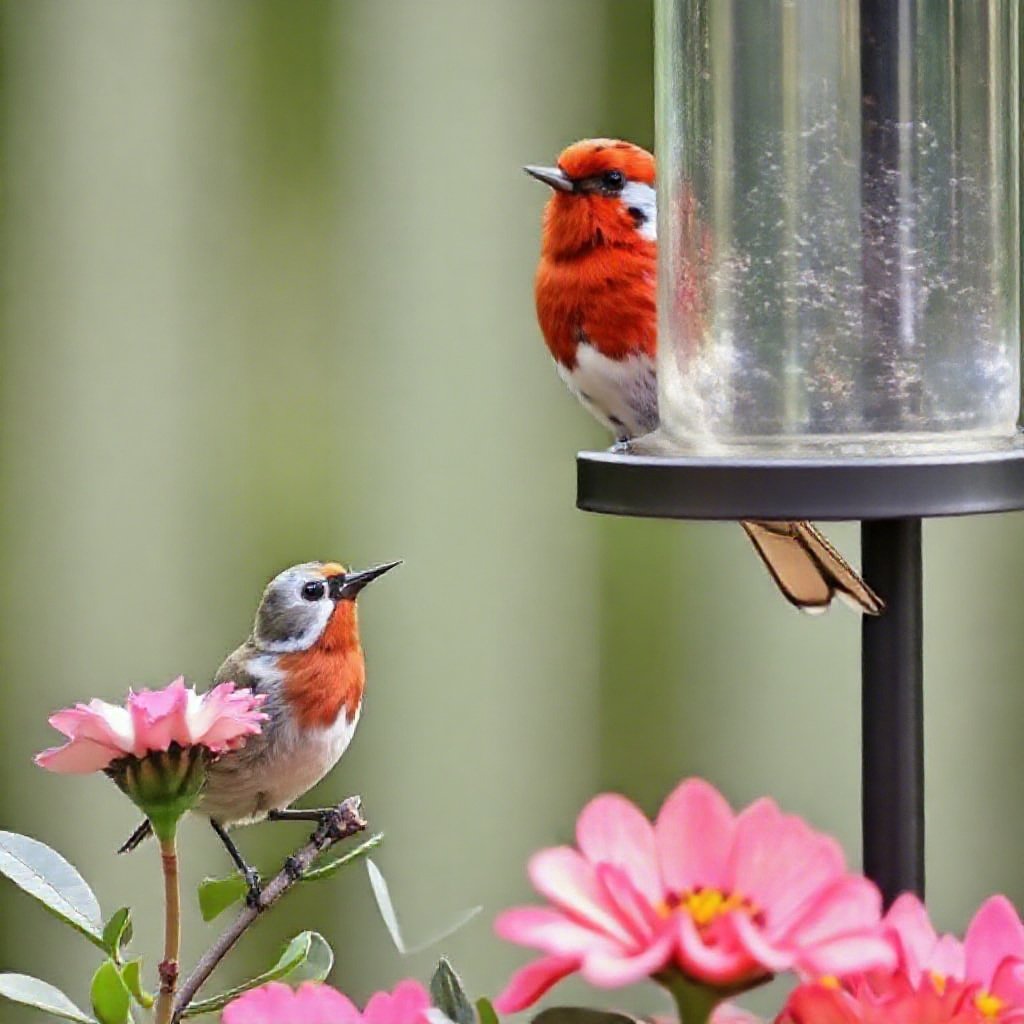Creating a Bird-Friendly Habitat
Want to turn your garden into a bird paradise? It’s easier than you think! Birds need food, water, and shelter, and with a bit of planning, you can provide all three.
Why Bird-Friendly Gardens Matter
Bird-friendly gardens are a win-win. They help local wildlife and make your garden a lively, beautiful place. Birds need food, water, and shelter to survive, and your garden can offer all that. Plus, having birds around boosts biodiversity and keeps ecosystems healthy. And let’s be honest, who doesn’t love the sight and sound of birds chirping away?
If you’re keen on bird-friendly garden design, start with native plants. These plants are tough, low-maintenance, and birds love them. They can handle local weather and need less water, making them perfect for a sustainable garden.
Giving Birds a Safe Place to Stay
Birds need safe spots to nest, rest, and hide from predators. You can help by planting shrubs, evergreens, and thorny plants. These offer protection from bad weather and predators, making your garden a bird haven.
You can also put up nesting boxes. Birds like bluebirds, wrens, chickadees, and woodpeckers love these (OSU Extension). Just remember to clean them out at the end of each nesting season.
Here are some tips to make your garden bird-friendly:
- Dense Shrubs and Trees: Plant shrubs and trees with thick foliage. Birds can hide and nest here.
- Evergreens: These provide year-round protection, especially in winter.
- Nest Boxes: Put up nest boxes in different spots to attract various bird species.
- Natural Debris: Leave some broken branches and prunings around. Birds can use these as hiding spots.
For more tips, check out our article on how to make your garden bird-friendly.
By focusing on these simple steps, you can create a garden that’s a magnet for birds. Want more ideas? Take a look at our bird-friendly landscaping ideas and bird-friendly landscaping tips.
Attracting Birds with Native Plants
Want to turn your garden into a bird paradise? It all starts with the right plants. Native plants are the secret sauce for bringing birds to your backyard, offering them food, shelter, and a place to raise their young.
Native Plants for Bird Food
Native plants are like a year-round buffet for birds. They provide seeds, berries, nectar, and attract insects—basically, everything a bird could want. According to Audubon, 96% of land birds rely on insects to feed their chicks. Native plants pull in these insects, making sure birds have plenty to eat, especially when they’re raising their young.
Examples of Native Plants and Their Benefits
| Plant | Food Source | Supported Species |
|---|---|---|
| Oak Trees | Insects, acorns | 557 types of butterflies and moths |
| Sunflowers | Seeds | Finches, Sparrows |
| Serviceberry | Berries | Robins, Cedar Waxwings |
| Milkweed | Nectar | Hummingbirds, Monarch Butterflies |

These plants don’t just feed birds; they keep the whole ecosystem humming by supporting a balance of predator and prey.
Benefits of Planting Native Species
Planting native species does more than attract birds. These plants are built for your local climate and soil, so they need less water and care once they’re settled in. That makes them a win-win for you and the environment.
Key Benefits of Native Plants
- Water Savers: Native plants drink less water than their non-native cousins.
- No Pesticides Needed: They grow strong without chemicals, making your garden safer for birds and other critters.
- Biodiversity Boosters: They support a wide variety of insects, which means more food for more bird species.
- Ecosystem Helpers: They keep the balance between predators and prey in check.
Take oak trees, for example. They can attract 557 types of butterflies and moths. Compare that to non-native ginkgo trees, which might only support 5 species (Audubon). That’s a huge difference in local biodiversity.
Native plants also offer nesting materials and shelter, making your garden a cozy home for birds. By mixing in a variety of native plants, you can create a lively, bird-friendly garden that supports wildlife all year long.
For more tips on designing a bird-friendly garden, check out our article on bird-friendly garden design and explore bird-friendly landscaping ideas to make your garden a welcoming haven for feathered friends.
Giving Birds a Splash: Water Sources They’ll Love
Birds need water for more than just quenching their thirst. They also need it for bathing. By setting up a reliable water source in your garden, you can attract a variety of birds that might otherwise skip your feeders.
Why Birds Need Fresh Water
Birds need fresh, clean water to stay hydrated and keep their feathers in top shape. Bathing helps them get rid of dirt and pesky parasites, making their feathers work better for insulation and flying. A birdbath can draw in birds that aren’t interested in seeds and wouldn’t normally visit your feeders.
Here’s why fresh water is a big deal:
- Hydration: Birds need to drink, especially when it’s hot.
- Feather Care: Bathing keeps their feathers clean and functional.
- Attraction: Water sources bring in different bird species, boosting your garden’s biodiversity.
Picking the Perfect Birdbath
Choosing the right birdbath is key. The best ones mimic natural puddles and shallow pools. Look for a birdbath that’s shallow with a gentle slope so birds can easily wade in.
Must-Have Features for a Birdbath:
- Shallow Depth: Aim for 1-2 inches deep so birds can wade comfortably.
- Gentle Slope: A gradual slope helps birds of all sizes get in and out easily.
- Ground Level: Birds often prefer ground-level baths, but this can make them easy targets for predators. Place the birdbath in a safe spot.
To make your birdbath even more inviting:
- Shade: Place it in the shade to keep the water cool. Nearby trees can provide branches for birds to preen after bathing.
- Moving Water: Birds love the sight and sound of moving water. Add a dripper or sprayer to make your birdbath more appealing. You can buy one or DIY with an old bucket or plastic container (All About Birds).
| Feature | Description |
|---|---|
| Depth | 1-2 inches |
| Slope | Gentle, allowing birds to wade in |
| Placement | Ground level is preferred, but ensure safety from predators |
| Shade | Place in the shade to keep water cool and provide nearby branches for preening |
| Dripping Water | Adding a dripper or sprayer to create moving water, which is attractive to birds |

By adding these features, you can create a welcoming spot for birds. For more tips on making your garden bird-friendly, check out our articles on bird-friendly garden design and how to make your garden bird-friendly.
Plant Selection for Attracting Birds
Want to turn your garden into a bird paradise? Picking the right plants is key. With the right mix, you can create a haven that offers food, shelter, and nesting spots for our feathered pals.
Plants That Attract Birds
To make your garden a bird magnet, focus on plants that provide food and nesting materials. Here are some top picks:
Sunflowers (Helianthus spp.): These are like bird buffets, especially during migrations. Varieties like Helianthus ciliaris in the Southwest and Helianthus angustifolius in the East are seed powerhouses.
Milkweed (Asclepias spp.): Milkweed is a bug magnet, and birds love bugs. American Goldfinches even use milkweed fibers for their nests, and the fluffy seeds make cozy nest linings (Audubon).
Trumpet Honeysuckle (Lonicera sempervirens): Hummingbirds can’t resist this vine’s nectar. Plus, Purple Finches and Hermit Thrushes munch on its fruit, and Baltimore Orioles sip the nectar during their travels.
Oaks (Quercus spp.): Oaks are like bird condos. Shumard oaks in the Southeast and Oregon white oaks in the Pacific Northwest offer nesting spots and a buffet of insects and acorns (Audubon).
Year-Round Food Sources
To keep birds coming back, plant a variety of species that provide food throughout the year.
| Season | Plants | Food Type |
|---|---|---|
| Spring | Serviceberry (Amelanchier spp.) | Berries |
| Summer | Elderberry (Sambucus spp.) | Berries, nectar |
| Fall | Sunflowers (Helianthus spp.) | Seeds |
| Winter | Holly (Ilex spp.) | Berries |
By mixing it up, you can offer a year-round buffet and create a lively garden. For more ideas on making your garden bird-friendly, check out our article on bird-friendly garden design.
If you want to make your garden a wildlife hotspot, plant selection is a must. Native plants that offer food and shelter can support local bird populations and bring the beauty of birds to your backyard. For more tips on creating a bird-friendly garden, visit our guide on how to make your garden bird-friendly.
Keeping Your Garden Bird-Friendly
Want to make your garden a hotspot for birds? It’s all about making smart choices and showing a bit of love to nature. Here’s how you can keep your garden buzzing with bird activity.
Ditch the Insecticides
First things first, toss out those insecticides. Birds love munching on insects, and these little critters are especially important for baby birds. Going organic helps keep the ecosystem in balance and makes your garden a bird buffet.
| Why Skip Insecticides | Bird Benefits |
|---|---|
| Insects are bird food | More bird visitors |
| Crucial for baby birds | Healthier bird families |
| Supports ecosystem | More bird variety |
Need more tips? Check out our bird-friendly landscaping tips.
Dead Trees Are Your Friends
Dead trees might look a bit rough, but they’re goldmines for birds. These trees offer cozy spots for birds to nest and hide from bad weather. Plus, they’re crawling with insects, making them a handy food source.
| Why Keep Dead Trees | Bird Benefits |
|---|---|
| Nesting spots | Safe homes |
| Weather shelter | Better survival |
| Insect supply | Easy meals |
Adding dead trees to your garden can really boost your bird-friendly efforts. For more ideas, visit our bird-friendly garden design page.
By focusing on these simple steps, you can turn your garden into a bird paradise. For more tips, check out our guide on bird-friendly landscaping ideas.
Making Your Garden a Bird Haven
Want to turn your garden into a bird paradise? It’s easier than you think! By focusing on a few key elements, you can create a welcoming space for our feathered friends. Let’s talk about two simple yet effective ways to make your garden more bird-friendly: adding nesting boxes and planting a variety of native plants.
Nesting Boxes: Bird Condos
Nesting boxes are like cozy condos for birds. They provide safe spots for birds to nest and raise their young, especially for those that prefer cavities.
When setting up these boxes, make sure they have ventilation holes at the top and drainage holes at the bottom. This keeps the inside comfy and dry. Regular checks are a good idea to keep out any unwelcome guests like invasive species that might harm the birds.
| Feature | Why It Matters |
|---|---|
| Ventilation Holes | Keeps the box cool |
| Drainage Holes | Prevents water buildup |
| Regular Monitoring | Keeps out harmful invaders |
Want more tips? Check out our guide on making your garden bird-friendly.
Plant Variety: The Bird Buffet
A mix of native plants is like an all-you-can-eat buffet for birds. They offer food throughout the year—think seeds, berries, nuts, and nectar. Plus, they provide great spots for nesting and hiding from predators (National Wildlife Federation).
Try to mimic the natural plant life in your area. Evergreen trees and shrubs are great because they offer cover all year round. This way, birds always have a place to eat and hide.
| Plant Type | Bird Benefits |
|---|---|
| Native Plants | Year-round food |
| Evergreen Trees | Shelter in all seasons |
| Shrubs | Nesting and protection |
Skip the insecticides—birds love munching on bugs. And don’t be too quick to remove dead trees; they make perfect homes for cavity-nesting birds (National Wildlife Federation).
For more ideas on creating a bird-friendly garden, check out our article on bird-friendly landscaping tips.
By making these small changes, you’ll soon have a garden that’s chirping with life. Happy bird-watching!

My name is Michelle Warren, and I’m the founder of Peaceful Gardening. As a 10-year breast cancer survivor, I’ve discovered the profound therapeutic power of gardening. This journey has not only helped me recover but has also become my passion and a source of ongoing peace and joy.
Peaceful Gardening was born from my desire to share the healing benefits of gardening with others. Whether you’re facing health challenges, dealing with stress, or simply looking to connect more deeply with nature, this space is for you.
Over the past decade, I’ve cultivated not just plants, but a deep understanding of how gardening can positively impact mental health. I’ve worked with local community gardens, led workshops on mindful gardening practices, and collaborated with mental health professionals to develop gardening-based stress reduction programs.
Peaceful Gardening was born from my desire to share the healing benefits of gardening with others. Whether you’re facing health challenges, dealing with stress, or simply looking to connect more deeply with nature, this space is for you.
Here, you’ll find evidence-based advice on using gardening as a tool for mindfulness, stress relief, and emotional healing. I share personal stories, practical tips, and scientifically-backed information on how to create your own therapeutic garden space, no matter the size of your yard or balcony.
My mission is to help you discover the joy, peace, and healing that comes from nurturing plants and connecting with nature. Join me in exploring how the simple act of tending to a garden can transform your mental and emotional wellbeing.
Welcome to Peaceful Gardening – let’s grow together towards better mental health!”

